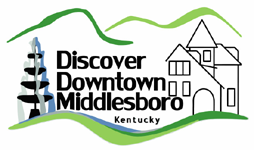Significant economic impact of state and federal rehab tax credits announced
Among findings, Kentucky Historic Preservation Tax Credits allocated in 2013 to generate nearly $79 million estimated investment in rehabilitation
FRANKFORT, Ky. – Using state and federal historic preservation tax credits, rehabilitation of a single downtown commercial building located in a Kentucky Main Street community generates average private investment of $360,793, the Kentucky Heritage Council announced today. This includes 47 completed projects and translates to nearly $17 million of estimated public and private investment in these historic buildings since 2005, when the Kentucky Historic Preservation Tax Credit was established.
Additionally, for all commercial and residential rehabilitation projects proposed in 2013, the state tax credit alone is poised to generate nearly $79 million of estimated investment in 113 projects in 31 counties, the agency reported. Individual project budgets range from $23,000 to $7.5 million, while tax credit allocations range from nearly $2,300 to just under $200,000 per project.
“Most impressive, since 2005, projects utilizing both the state and Federal Historic Rehabilitation Tax Credit have resulted in total public and private investment of $253 million in historic preservation across the state,” said Craig Potts, Kentucky Heritage Council executive director and state historic preservation officer. “This includes 425 completed residential and commercial projects, with average private investment of $595,184 per project, facilitated by a state tax credit averaging $44,801 and federal credit averaging $193,121 per project.
“These numbers prove the success of these programs and demonstrate a pretty dramatic return on investment of private funds in local rehab projects, generated by the federal credit paired with a modest investment by the state of $5 million annually,” Potts added. “Many people we work with will tell you, their project would not have happened without these credits.”
The Kentucky Heritage Council administers state and federal historic rehabilitation tax credits, and the Kentucky Main Street Program (KYMS). The figures were released during a news conference in Maysville, scheduled in conjunction with the KYMS summer meeting, which began Wednesday and continues through Friday. More than 60 individuals are participating, representing 40 Kentucky communities.
The news conference took place in front of the Lasting Impressions Salon & Spa building at 14 East 2nd St., located in the Maysville National Register Downtown Historic District. Building owners Carl and Patti North have rehabilitated the structure to house their salon and other retail on the first floor and their living space above, and they are in the process of launching a second phase of work.
In addition to Potts and Patti North, other speakers included Maysville Mayor David Cartmell, and Bob Stewart, secretary of the Kentucky Tourism, Arts and Heritage Cabinet, who explained how the Kentucky Main Street Program works with Cultural Arts Districts and Kentucky Trail Towns to expand heritage tourism opportunities.
“Trail Towns capitalize on natural resources to get visitors into your towns, while small businesses in Main Street communities serve needs for food, lodging and shopping. Cultural Arts Districts offer additional opportunities for arts experiences and showcasing local talent. But anchoring all of this are the unique historic buildings and places that tell unique stories about each community,” Stewart said. “These are what make the visitor experience authentic, and these are the kinds of programs the cabinet seeks to support.”
Buildings must be listed in or eligible for the National Register of Historic Places to qualify for rehab tax credits, and work must first be certified by the Kentucky Heritage Council as meeting the Secretary of the Interior’s Standards for Rehabilitation. Kentucky is ranked fourth nationally in the number of National Register listings. In 2012, Kentucky ranked ninth nationally in successfully completed projects utilizing the 20 percent federal credit, with 26. Return on investment increases when the federal credit is used in combination with the state credit. The Kentucky credit is 20 percent for commercial and other projects and 30 percent for owner-occupied residential properties.
Again referring to a single downtown commercial building located in a Kentucky Main Street community, Potts noted that the average value of tax credits for this building type per individual investor, projected through 2013, is $41,542 from the state credit, and $72,159 through the federal program. Additionally, the average Main Street rehabilitation project to date generates $10,391 in Kentucky sales tax, based on $173,180 in material costs; approximately $7,504 in state payroll tax, based on $187,613 in labor costs; and $16,885 in increased property taxes.
“Clearly, rehabilitation tax credits are vital tools for Kentucky Main Street communities interested in supporting preservation projects in their commercial districts, and these projects create additional momentum for investment throughout the community,” Potts said. “And when you consider the increased taxable value added to these properties along with the sales and payroll tax numbers, this revenue more than covers the investment the state makes in the Kentucky preservation tax credit incentive.”
For additional financial information, more about these programs or photos following the event, visit www.heritage.ky.gov.
# # #
An agency of the Kentucky Tourism, Arts and Heritage Cabinet, the Kentucky Heritage Council/State Historic Preservation Office is responsible for the identification, protection and preservation of archaeological resources and historic buildings, sites and cultural resources throughout the Commonwealth, in partnership with other state and federal agencies, local communities and interested citizens. This mission is integral to making communities more livable and has a far-ranging impact on issues as diverse as economic development, jobs creation, affordable housing, tourism, community revitalization, environmental conservation and quality of life.

No comments:
Post a Comment